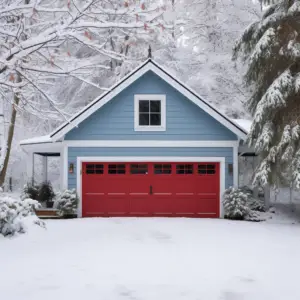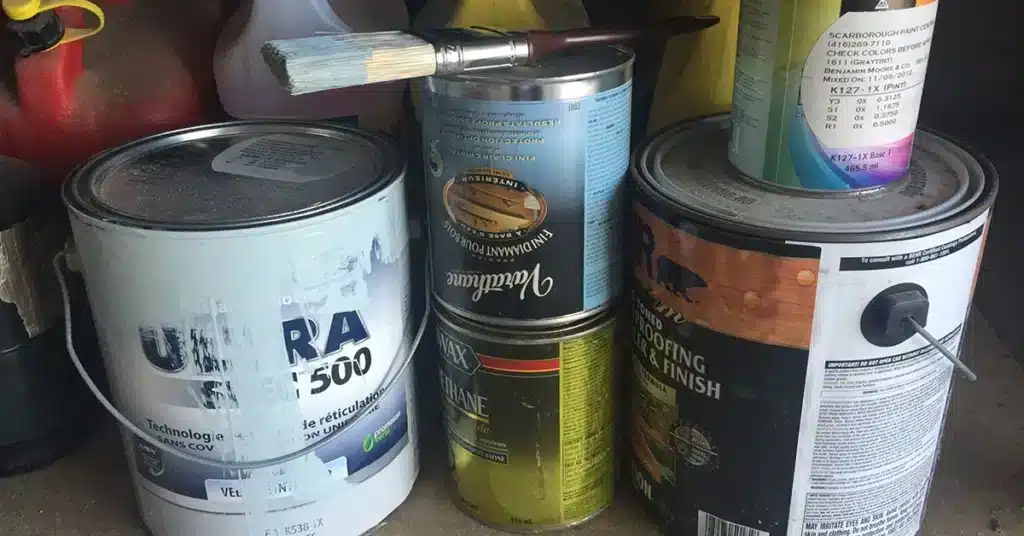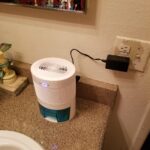Paint freezing, If you’re like most people, your garage probably has a few cans of paint. But what occurs if it becomes chilly and those cans begin to freeze?
When the temperature drops, your paint may freeze. Paint that has been frozen may lose its consistency and become more challenging to work with. Therefore, it would be best to take some precautions before the cold weather, especially winter, arrives.
This article will cover some strategies for keeping the paint in your garage from freezing.
Table of Contents
How Can You Keep Your Paint from Freezing in the Garage

Below are a few things you can do to prevent the paint in your garage from freezing:
Seal the Can’s Lid Tightly
Make sure the paint is well sealed in the original container. The paint will probably freeze if the container has holes or cracks.
To keep air particles from entering the cans, you can cover them with plastic. In addition, you can insulate the area around the cans to keep them warm. Some people even gently tap the lid into place by using a rubber mallet.
Another crucial step is to regularly inspect the paint cans when keeping paint for an extended period to make sure they are not leaking or rusting.
Store in a Dry, Cold Environment
When the temperature drops too low, the molecules in the paint begin to slow down and cluster together, causing the paint to freeze. In the winter, it is advisable to keep paint out of basements and attics because these spaces frequently experience extreme temperatures.
Instead, look for a warm area with storage space, such as a second bedroom or office. But if you store the paint correctly, you can continue to keep it in the garage.
Make Use of a Freeze-Thaw Stabilizer
Use a substance known as a freeze-thaw stabilizer to prevent the freezing of your paint. Before you begin painting, you can add this chemical component to your paint. It will make the paint more resistant to freezing, even in chilly temperatures.
Secure the Paint Container in a Bag or a Box
Put the paint container in a bag or box packed with shredded newspaper. It will prevent the paint from freezing and aid with insulation.
Keep the Garage Warm
Another way to prevent the paint in your garage from freezing is by using heaters.
Get the heaters from a store near you; if you don’t have them in your home, connect them to a power source and set their thermostat at the lowest level. This will ensure that the room remains warm enough to prevent the paint from freezing.
If you must store paint in a location without heat, think about elevating the cans off the ground on a shelf or raised platform to prevent them from freezing. You can also add heavy-duty foam insulation to your garage’s walls and doors to maintain a constant temperature.
If everything fails, you may always swap your winter painting project for oil-based paint. Oil-based paints have the extra advantage of being more moisture-resistant and are less likely to freeze than water-based paints.
However, they can also be more challenging to work with and dangerous if ingested. So before switching to oil-based paints, it could be a good idea to get professional advice if you’re unfamiliar with them.
By implementing these safety measures, you can prevent your paint from freezing and guarantee a successful painting project. But what if you leave your paint in the garage throughout the winter?
What to Do if Paint Freezes in Your Garage
It would be best to thoroughly inspect the paint in case you unintentionally leave it in your garage, and it freezes.
For instance, applying the paint to a tiny part of the surface will allow you to assess the paint’s finish. The paint is no longer good if the finish is uneven or streaky. But if the paint appears to be in good shape, carry on with your project as usual.
Can Frozen Paint be Thawed and then Used Later?
Frozen paint can be thawed and then used later. However, a few things must be considered before defrosting and using frozen paint:
- First, the paint should be refrozen slowly and gradually. If not, the paint can become lumpy or useless.
- Second, it’s crucial to thoroughly mix the paint before applying it once it has thawed.
- Finally, it’s crucial to test frozen paint on a tiny area before painting a complete wall or surface because it might not match the original color or texture.
With these factors in mind, it is possible to thaw frozen paint and use it later, albeit the results might not be ideal. After thawing, if none of these methods work, it is recommended to dispose of the frozen paint immediately.
How Can You Get Rid of Frozen Paint?

Your frozen paint cannot be disposed of in the usual manner. It is crucial to dispose of it correctly since it can be dangerous to anyone. Here are some easy steps You should take to do this:
- The first step is to contact the local waste disposal team to find out if they take frozen paint. If not, the next best action is to get in touch with a hazardous waste disposal firm.
- As soon as you have located a place to take the paint, take as much of it out of the container and put it in a large trash bag. Make sure to label the bag as hazardous garbage and to seal it tightly.
- Afterward, take the bag to the disposal location and dispose of the paint according to the disposal guidelines.
By following these steps, you can ensure that frozen paint is disposed of securely and without endangering the environment.
Final Take
If you’re like most people, you probably don’t consider the weather when storing paint. You might be shocked to learn that there are a few things you can do to prevent the paint in your garage from freezing over the winter. You can later save time and money by following the advice provided above.


